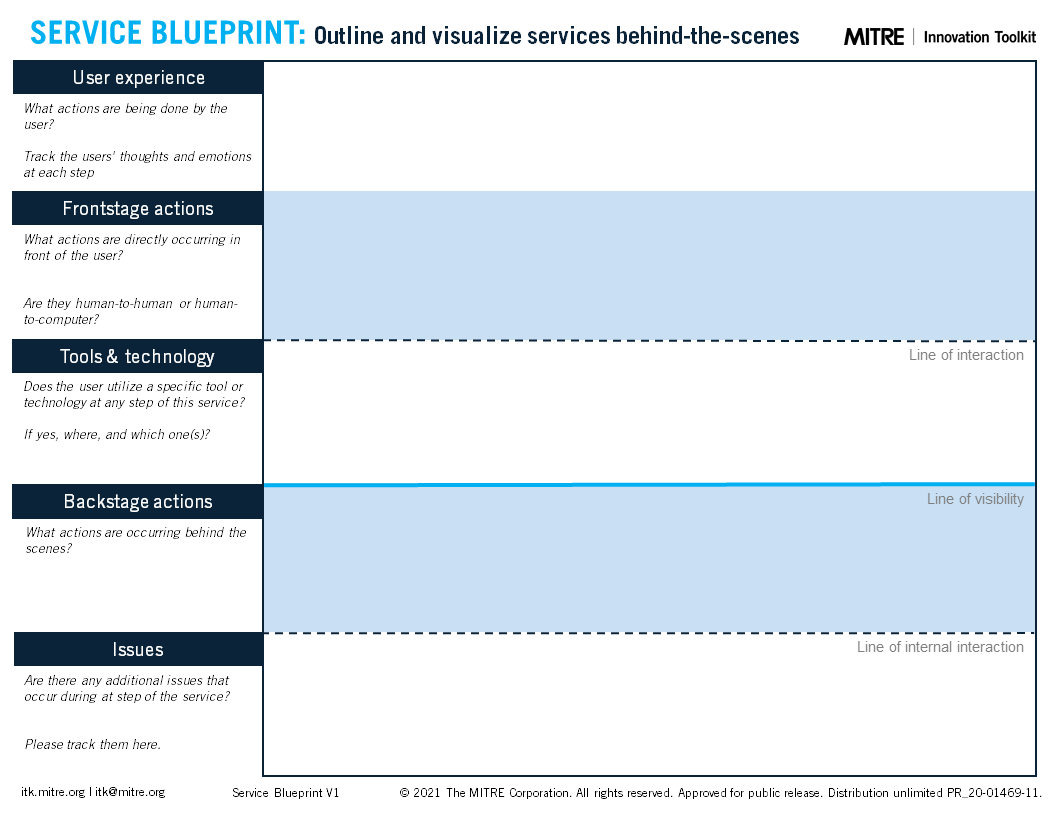Service Blueprint |
 |
What is it
Outline and visualize a service to connect the user experience, or “frontstage,” to what happens behind-the-scenes, or “backstage.”
Why use it
- Achieve a holistic, shared perspective of how the user experiences your service.
- Provide insights about critical moments and possible improvement throughout the service.
- Transform the service and create change.
When to use it
- When a problem spans multiple offerings, groups, or locations.
- When identifying the root cause of a complex problem.
- When streamlining a user experience to remove barriers or blockages.
Level
Advanced
Outcome
Understand
Group Size
5+ people
Suggested Time
60+ minutes
Service Blueprint Worksheet

How to do it
STEP 1
Identify the problem space that is key to the success of your service. The opportunity space should be easy to understand, a simple subject matter, and based on data.
STEP 2
Pick the scenarios within your problem space that will have the most impact. Develop a scenario statement using the following format: “A user wants/tries to ___, and experiences ____, resulting in ____.” Then, break down your scenario into steps and touchpoints.
STEP 3
Hold a blueprinting workshop with stakeholders and users to develop the end-to-end view of each scenario. Lay out the steps and touchpoints beforehand, and add detailed layers to capture the critical moments and ideas.
| Blueprint Layer | Definition |
|---|---|
| Step Definition | What happens in the step |
| Touchpoint | What/where of the step’s interaction |
| Actor | Who supports that step |
| System | Technology, hardware, processes |
| Observation | Notes that add detail to the step |
| Data | Metrics to indicate importance |
| Policy | Rules that make it so |
| Question | Questions that need to be followed up |
| Critical Moment | Sources of pain that breakdown the experience |
| Idea | Opportunity to improve overall impact |
STEP 4
Separate the critical moments and ideas to identify insights and potential service improvements. Look to amend critical moments that could leave the user dissatisfied with the service.
STEP 5
Out of the critical moments and ideas, themes will emerge for service improvements. Create categories and relationships between themes.
STEP 6
Take action on the strategic fixes to drive service improvement!
Benefits
Creates a vision for what a service could look like from both the user and back-end perspective
Challenges
One of the more involved and time-consuming tools
Combine With
- Problem Framing to understand the scope of the challenge
- Journey Mapping to create the user journey in more detail
